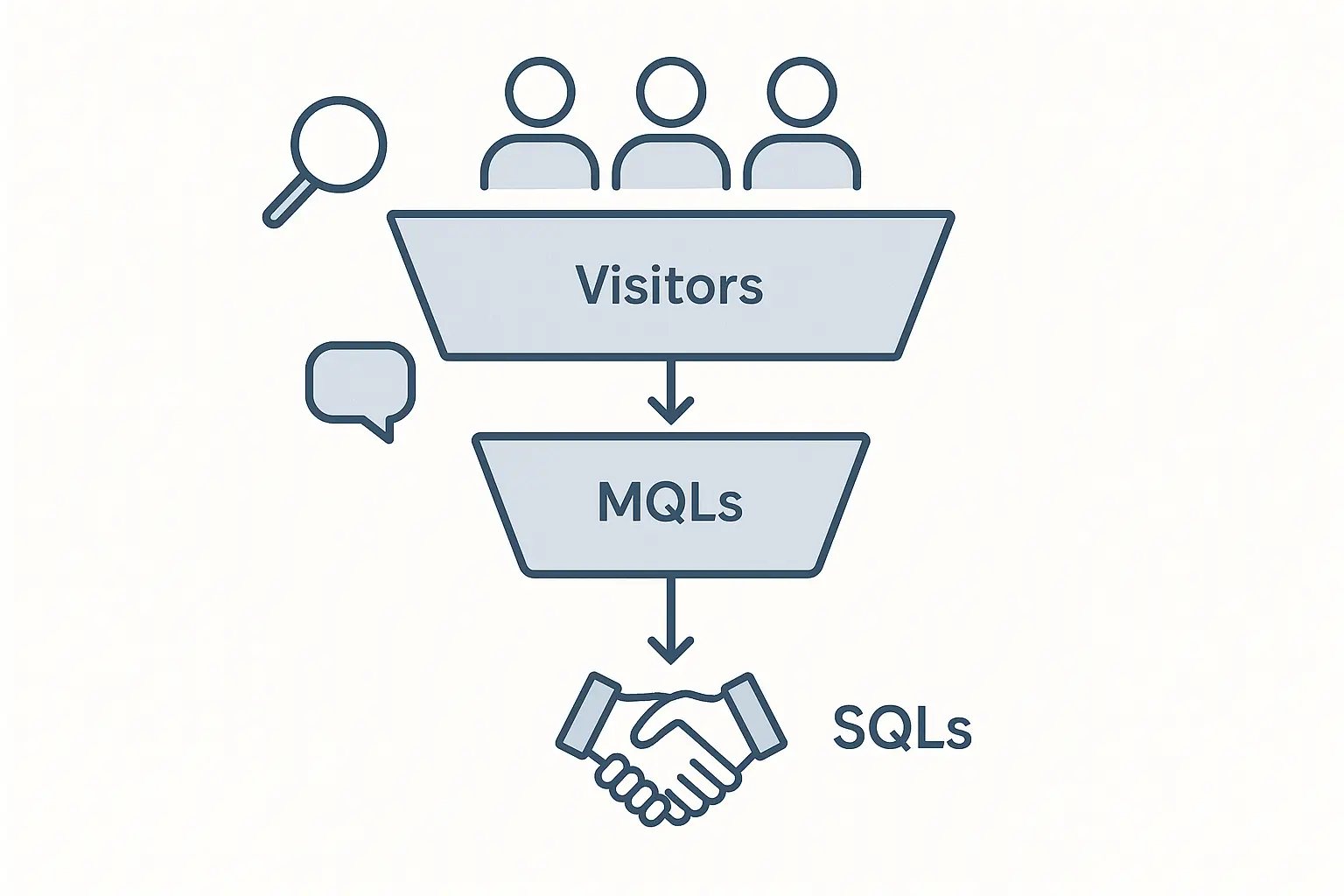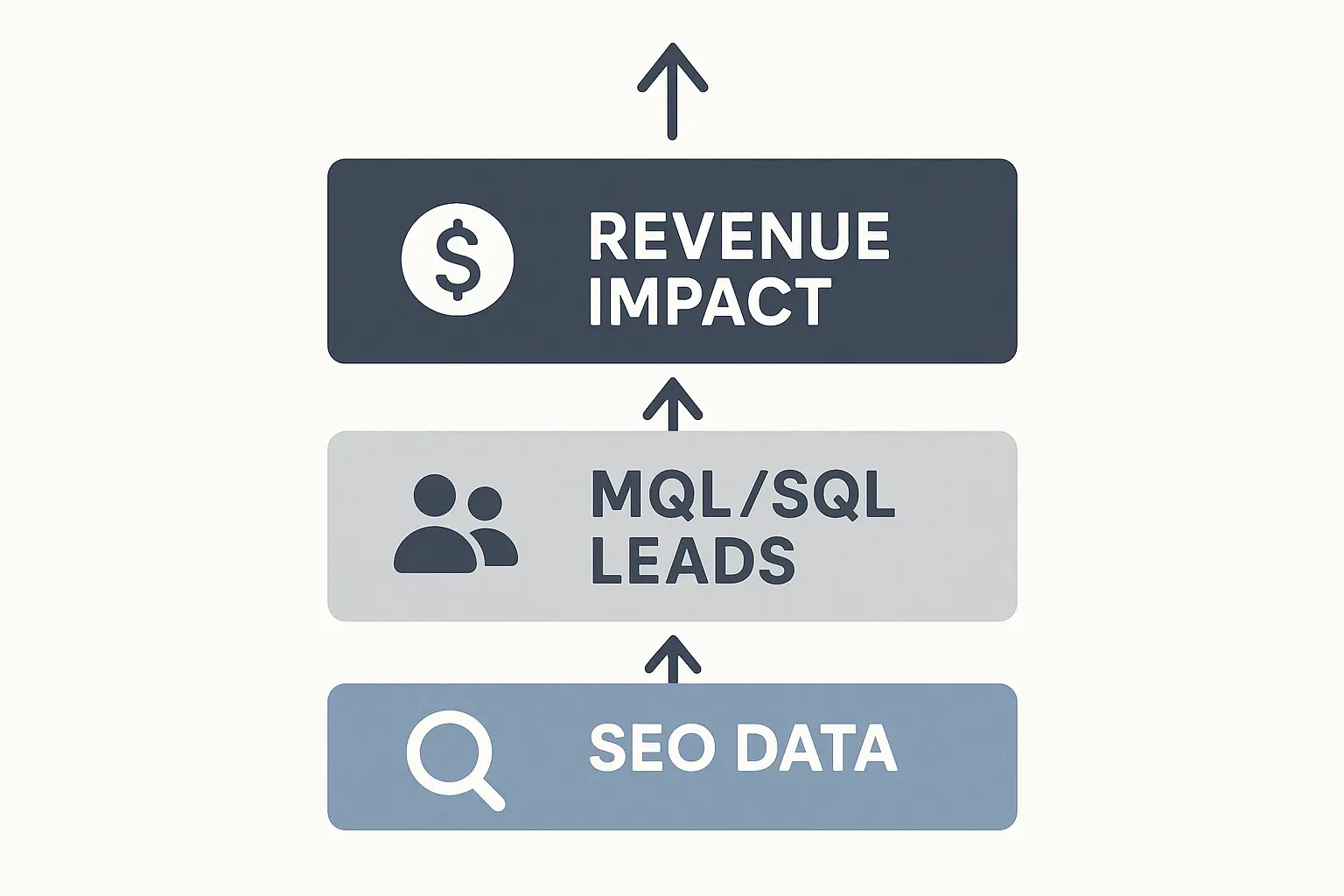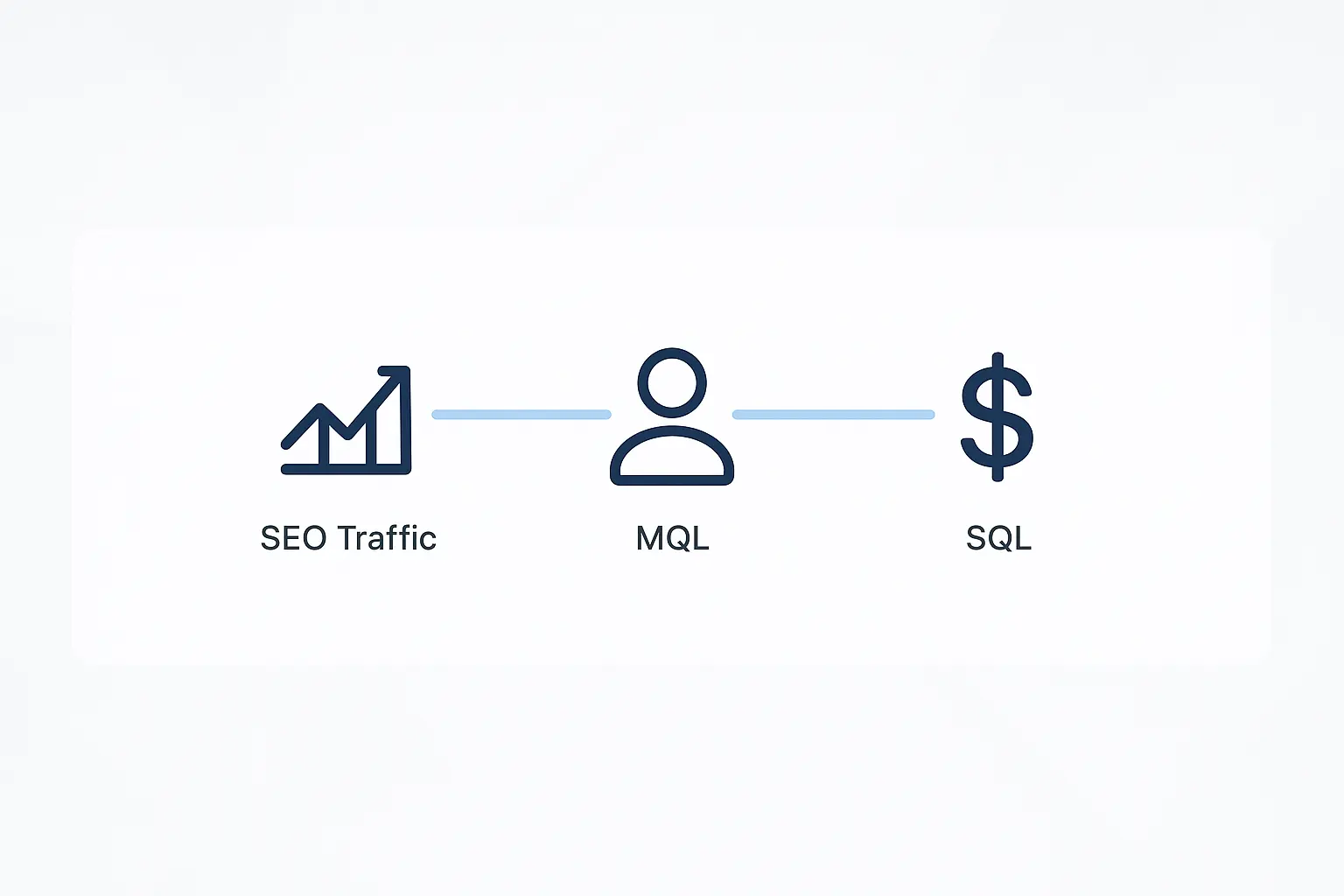You’ve been there. You pull up a stunning report for your client, with keyword rankings forming a beautiful upward curve and organic traffic climbing. You’re ready for a virtual high-five.
Then, the client asks the one question that can make your heart sink: “This is great, but how many sales did this actually drive?”
If that question feels familiar, you’re not alone. A staggering 49% of marketers say proving the ROI of their campaigns is their biggest challenge. For agencies, that challenge is magnified—you’re not just proving your own value, but the value of a client’s investment.
The good news is that the days of shrugging and pointing to vague “brand awareness” are over. By connecting SEO performance directly to Marketing Qualified Leads (MQLs) and Sales Qualified Leads (SQLs), you can change the conversation from rankings to revenue. This guide will show you how.
The Problem with Vanity Metrics
For years, SEO success was measured by a simple set of metrics: keyword rankings, organic traffic, and backlinks. While these are important health indicators, they don’t tell the whole story. They are leading indicators, not business outcomes.
Focusing solely on rankings is like a chef bragging about how hot the oven is. It’s a necessary part of the process, but the customer only cares about the taste of the final dish.
Consider this: research shows that only 5.7% of newly published pages will reach the top 10 of Google search results within a year. If your entire strategy hinges on hitting that top spot, you’re playing a game with tough odds.
A competitor’s update or a shift in search intent can wipe out your gains overnight, leaving you with little to show for it in terms of real business impact. The real goal isn’t just to be seen; it’s to be chosen. That requires moving beyond visibility metrics and into the world of lead attribution.
MQLs and SQLs: The Language of Business Growth
Before we dive into the technical setup, let’s clarify our definitions. These aren’t just acronyms; they represent critical stages in the journey from a curious browser to a paying client.
What is a Marketing Qualified Lead (MQL)?
An MQL is someone who has shown interest in your marketing efforts but isn’t quite ready for a sales conversation. They’ve moved beyond passively reading a blog post and have taken a specific action.
Examples: Downloading a whitepaper, signing up for a webinar, or subscribing to a newsletter.
They’ve essentially raised their hand and said, “I’m interested. Tell me more.”
What is a Sales Qualified Lead (SQL)?
An SQL is an MQL who has been vetted and deemed ready for a direct sales follow-up. Their actions signal a clear intent to purchase.
Examples: Requesting a demo, filling out a “Contact Sales” form, or asking for a price quote.
This is the handoff point where marketing passes the baton to the sales team. Since businesses with tightly aligned sales and marketing are 67% better at closing deals, tracking this journey is key. Connecting your SEO efforts to this journey is how you prove that your work doesn’t just generate clicks—it generates opportunities.
Closing the Loop: Your 4-Step Technical Attribution Blueprint
The magic happens when you build a bridge between your marketing analytics platform (like Google Analytics) and your client’s Customer Relationship Management (CRM) system (like HubSpot or Salesforce). This bridge allows data to flow seamlessly, turning anonymous website visitors into named leads with a clear origin.
Here’s how to build it.
Step 1: Establish the Tech Stack Handshake
First, ensure you have the essential tools in place:
- Google Analytics 4 (GA4): Your source of truth for website traffic and user behavior.
- Google Tag Manager (GTM): The “switchboard” that lets you manage tracking codes without bugging a developer.
- A CRM: Where all lead and customer data lives.
These three systems need to talk to each other. Your job is to make the introduction.
Step 2: Track High-Intent Conversions
Identify the key actions on the website that signify a user is becoming a lead. These are typically form submissions.
Using GTM, set up triggers that fire when these forms are successfully submitted. For each trigger, create a corresponding GA4 event tag. For example, a “Request a Demo” form submission could become an event named generate_lead. Then, mark this event as a “Conversion” in your GA4 settings. This tells Google the action is a business goal.
Step 3: Pass Source Data into the CRM
This is the most critical step. When a user fills out a form, you need to capture how they got to the site in the first place. The easiest way is by adding hidden fields to your forms.
These hidden fields automatically capture UTM parameters or referral data, and most modern form builders and CRM plugins can be configured to do this. The key is to capture the source and medium. For a visitor from Google Search, this would look like:
Source: googleMedium: organic
Now, when a new lead appears in the client’s CRM, it’s not just a name and an email. It’s a name, an email, and proof that they came from your organic search efforts.
Step 4: Build the Ultimate White-Label Dashboard
With tracking in place, you can build a report that tells the complete story. Using a tool like Looker Studio, pull data from two sources:
- From Google Analytics: Organic Sessions, Users, and the
generate_leadConversions you set up. - From the CRM: Using a connector, pull the number of MQLs and SQLs where the original source was
google / organic.
Your new report now showcases the entire funnel:
Top: Organic Traffic (from GA4)
Middle: Leads Generated (from GA4 conversions)
Bottom: MQLs & SQLs (from CRM, filtered by organic source)
You’ve officially connected your SEO activities to the metrics the C-suite actually cares about. This level of reporting is a cornerstone of effective white-label SEO, turning your agency from a vendor into a strategic growth partner.

Frequently Asked Questions (FAQ)
Q: What’s the main difference between an MQL and an SQL again?
A: Think of it as intent. An MQL is interested in learning (“I want your guide to X”), while an SQL is interested in buying (“I want a demo of your product”). Marketing nurtures MQLs; Sales engages SQLs.
Q: What are the absolute essential tools to get started with this?
A: At a minimum, you need Google Analytics 4, Google Tag Manager, and access to your client’s CRM. Most modern CRMs have native integrations or connectors for reporting tools that make this process much simpler.
Q: How long does it take to see SEO-driven leads after implementing this?
A: SEO is a long-term strategy. While traffic from existing content can generate leads immediately, seeing significant lead flow from new content and optimizations typically takes 3–6 months. Because SEO drives over 1,000% more traffic than organic social media, the potential is massive once the flywheel starts spinning. The key is to set up tracking from day one to capture that future value.
Q: Can I set this up for my clients if I’m not a technical expert?
A: Absolutely. The process can seem intimidating, but it’s built on logic. If you feel out of your depth, partnering with a technical expert or an agency SEO partner can bridge that gap, allowing you to focus on strategy while they handle the implementation.
Q: Does this process change for e-commerce vs. B2B clients?
A: The principles are the same, but the specific conversion points differ. For B2B, you’re tracking MQLs and SQLs. For e-commerce, you’d track metrics like “Add to Cart,” “Initiate Checkout,” and ultimately, “Transaction Revenue,” tying organic traffic directly to sales dollars.

From Service Provider to Growth Partner
Shifting your reporting from rankings to revenue does more than just impress clients—it fundamentally changes your relationship with them. You are no longer just “the SEO agency”; you are the engine driving measurable growth.
Companies with mature lead management processes see 9.3% higher sales quota achievement rates. By building the framework to track, attribute, and report on this, you place your SEO services at the heart of that success. It’s a powerful position that builds trust, proves value, and makes your agency indispensable.
Ready to see how automation and artificial intelligence can streamline this entire process? Discover the latest trends and tools transforming the landscape of AI in SEO.



